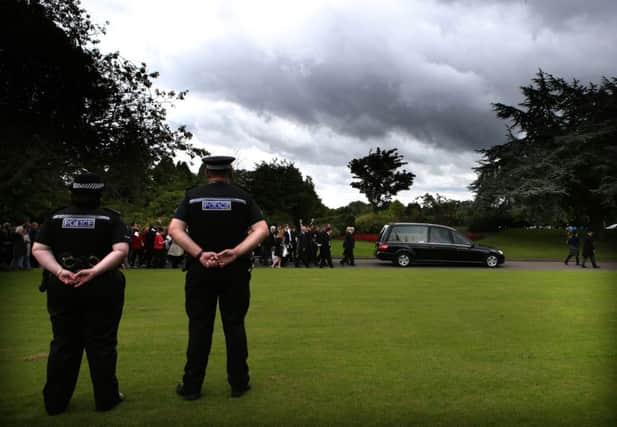Leaders: Ambulance service facing emergency


Yesterday, the funeral took place in Falkirk of Lamara Bell, a victim of the M9 car crash. Police failed to investigate a report of the crash, and it took a second call three days later before officers attended the scene to find Ms Bell, critically and ultimately fatally injured, along with her partner John Yuill, who was already dead.
It later emerged the police call centre that was contacted first of all had a 10 per cent absence rate a month before the incident. Police Scotland said it “works hard to ensure sickness absence does not have a detrimental effect on performance” and reported that the absence rate at the centre had since fallen to 4.5 per cent.
Advertisement
Hide AdAdvertisement
Hide AdYesterday, a Scottish Ambulance Service report revealed a 7 per cent absence rate among workers, the highest level since recording began ten years ago and 2 percentage points higher than the average across NHS Scotland. As a result, more than 570,000 hours have been lost since June 2014.
There are specific reasons why an ambulance worker might have a higher rate of absence than in other jobs, because of the nature of the work they carry out. Racing to locations to try to save lives, often with unhappy outcomes, is a stressful occupation. There is no margin for error in the time it takes to respond to a call and make the correct decision in life-and-death situations. Every day, staff face the prospect of witnessing the deaths of people who they are trained to save.
For that reason, it should cause alarm that the absence rate at the Scottish Ambulance Service runs beyond the set target of 5 per cent. There are two key problems here: the first being that the rate is not under control, and the second that the increased absences leave unacceptable gaps in the service, and therefore put further strain on the rest of the workforce.
It is essential that we deliver more care to the people who deliver our care in times of crisis and emergency. An ambulance service that does not have the staffing required to fulfil its basic obligations will result in avoidable loss of life at times, and the workforce will become increasingly demoralised when it needs to be motivated.
Government ministers say additional resources have been allocated to the service over the past two years. Sadly, this has not been enough to keep the absence rate in check.
It is evident that the service requires further support, but first the Scottish Government should take a closer look at the reasons for such a high rate of absence. With two years of additional funding providing a record level of absenteeism, the problem runs deeper than was previously understood.
Why we need a Plan Bee
WHAT a grim summer we have had so far in Scotland.
In June, we watched with envy as tennis fans at Wimbledon basked in sunshine and on-court temperatures soared into the 40s, while north of the Border, the skies darkened and we reached for coats that would both keep us dry and keep us warm. Still, we thought, it wouldn’t be long before the good weather would reach us too.
Then by the time the Open golf championship came along at St Andrews, conjuring up images of sun-kissed beaches and parched fairways, conditions were so bad that play was abandoned and the event had to be extended by a day for the first time since 1987.
Advertisement
Hide AdAdvertisement
Hide AdThen this week, as one of the wettest Julys on record came to a close, we had a forecast of snow in the Highlands. Even the most optimistic of us have begun to wonder if we really are bypassing summer this year.
There is also a serious side to all this personal inconvenience. As we report today, Scottish bees are on the verge of starvation because of bad weather, with low temperatures producing the worst honey yield since 1985. Beekeepers have been urged to feed their colonies with a mixture of sugar and water to try to save them. One keeper reports he has produced only 15 per cent of the honey he would expect in a normal year. It never rains but it pours.
Next week’s forecast shows no sign of improvement. We can only hope an Indian summer allows our bee colonies to build enough strength to make it through the winter. A golden August and September? That would be sweet.